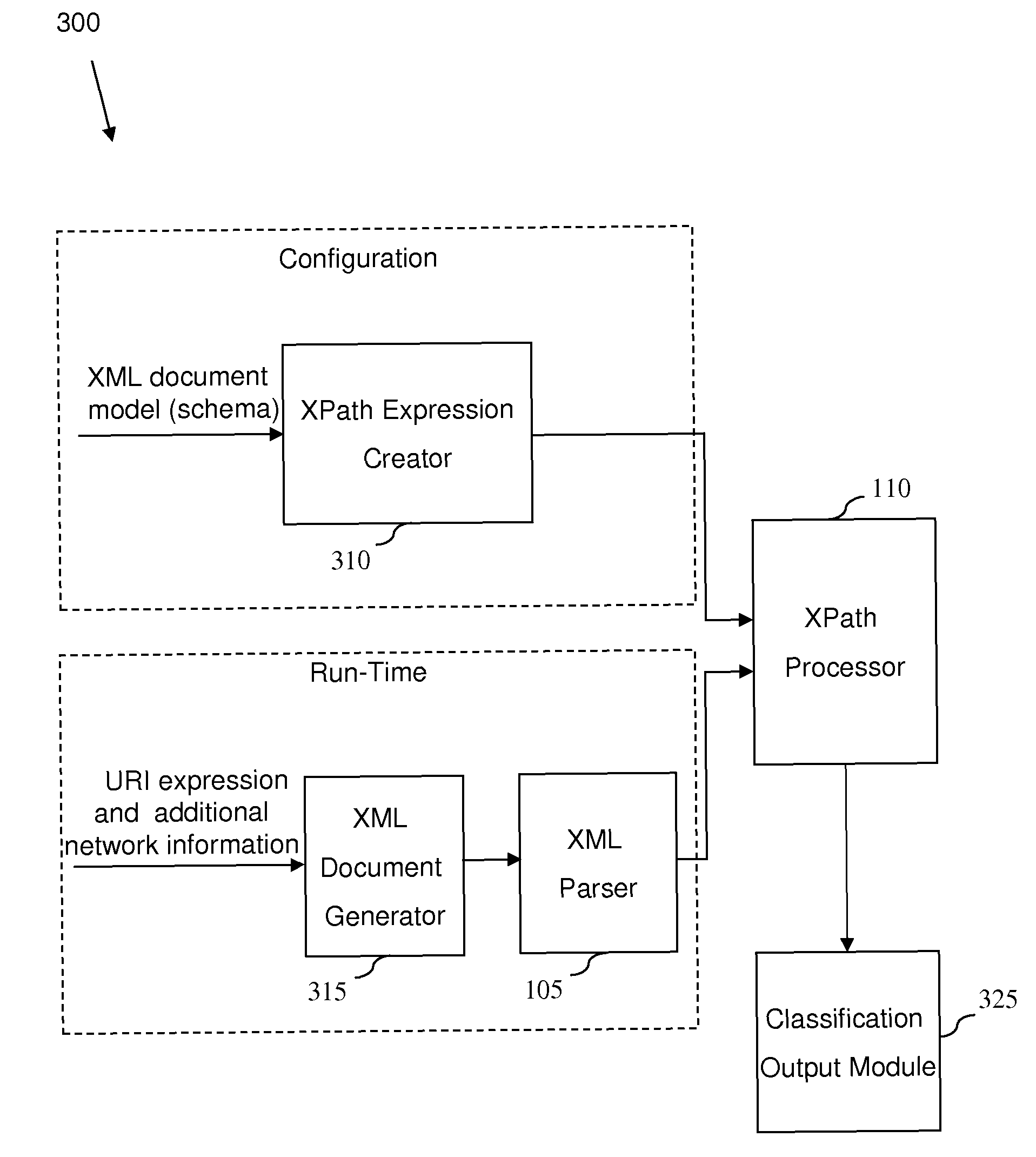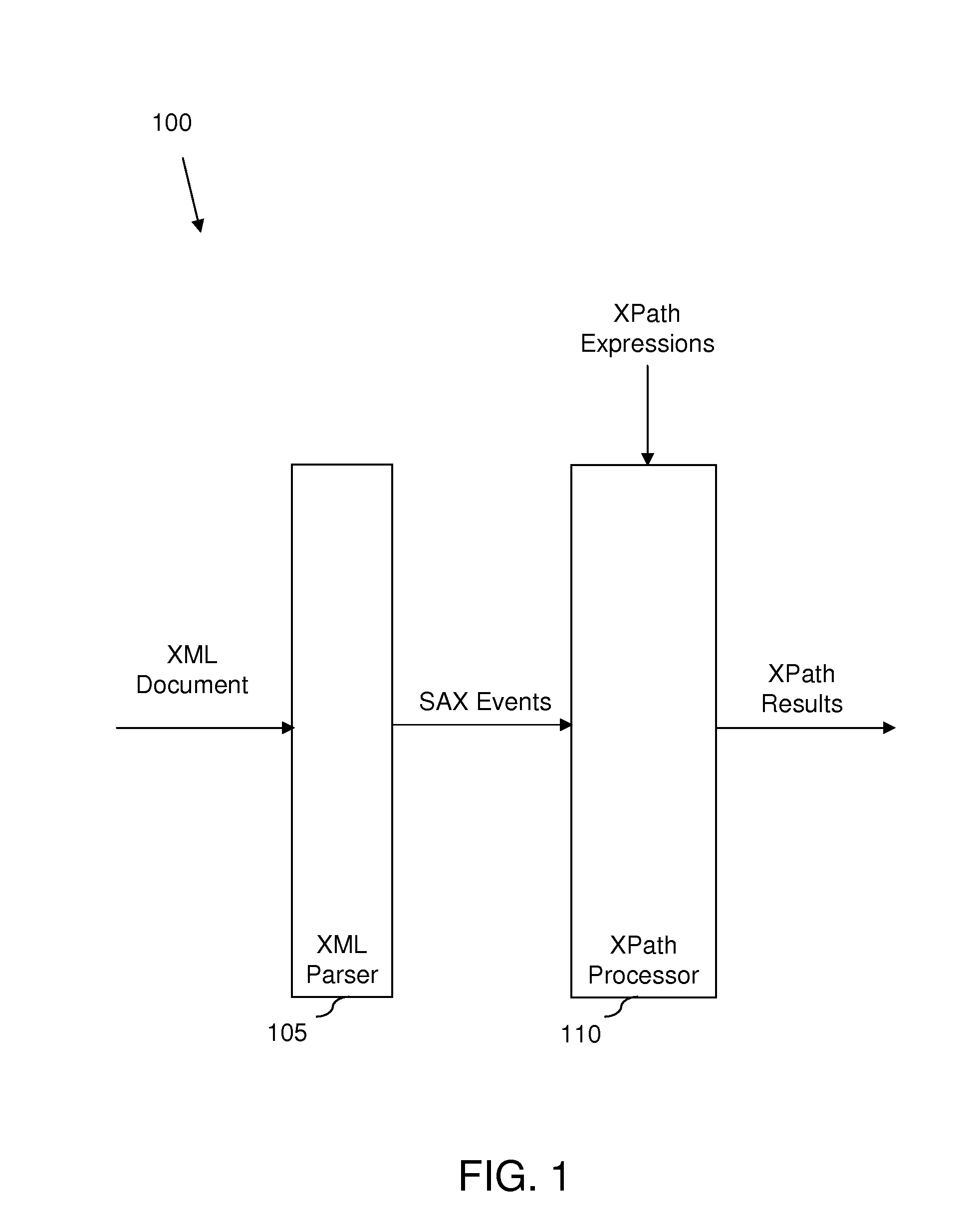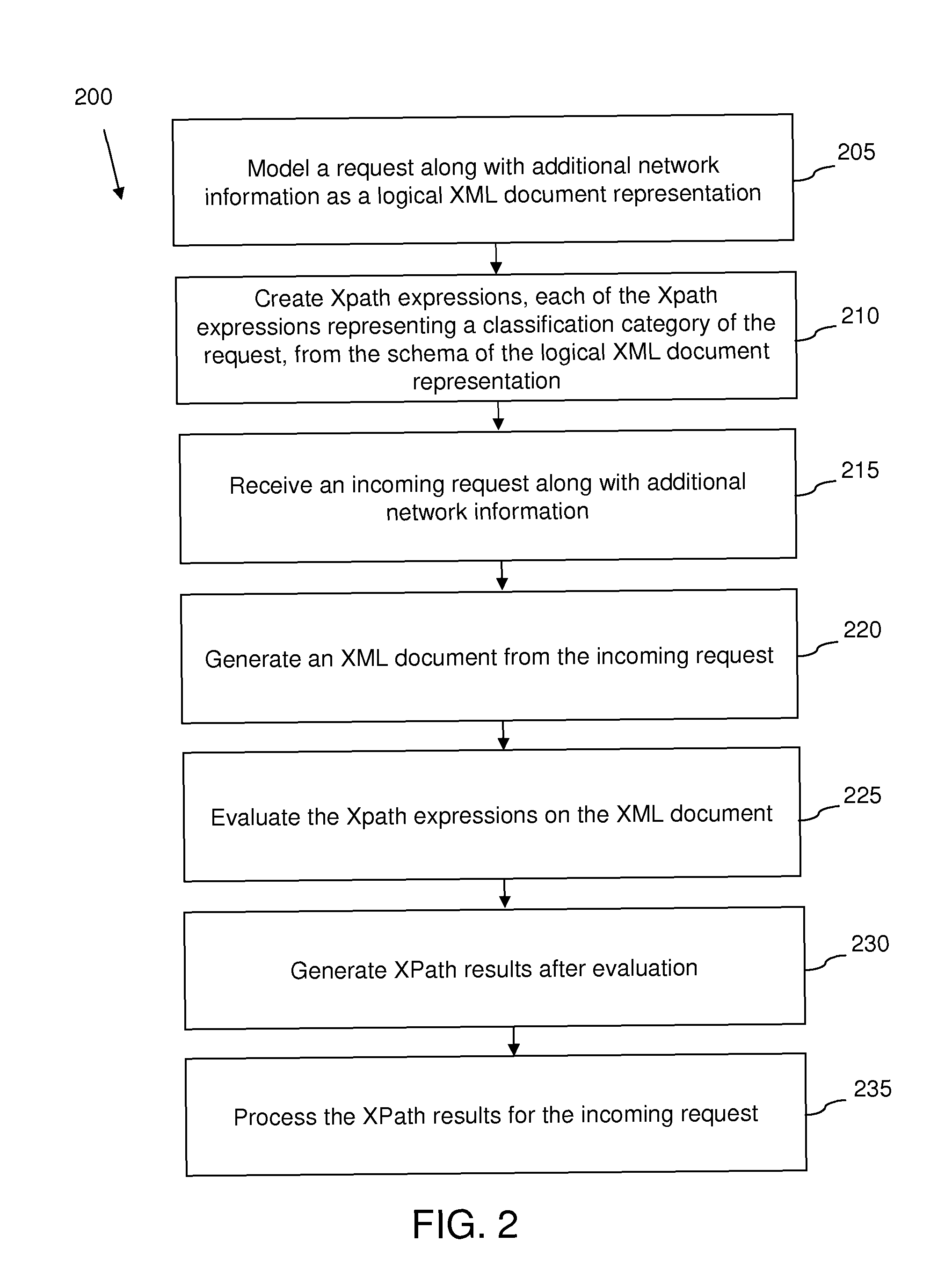Classifying uniform resource identifier (URI) using xpath expressions
a resource identifier and uri technology, applied in the field of information processing, can solve the problems of inefficiency, inefficiency, and inefficient regular expressions used to match different sub-patterns simultaneously
- Summary
- Abstract
- Description
- Claims
- Application Information
AI Technical Summary
Benefits of technology
Problems solved by technology
Method used
Image
Examples
Embodiment Construction
[0019]Embodiments of the invention described herein provide methods, system and machine-readable medium product for classifying requests using one or more XPath expressions. In an embodiment of the invention, an incoming request includes a URI expression. In another embodiment of the invention, an incoming request includes a URI expression and additional network information. In another embodiment of the invention, an incoming request includes one or more of a URI expression, a uniform resource locator (URL) and a uniform resource name (URN). Various embodiments of the invention enable to classify an incoming request using one or more XPath expressions. In an embodiment of the invention, a request (including URI and additional network information) is modeled as an XML document. Based on the schema of this XML document, one or more XPath expressions may be created at configuration stage and may be stored in a server. These XPath expressions are used for representing the classification...
PUM
 Login to view more
Login to view more Abstract
Description
Claims
Application Information
 Login to view more
Login to view more - R&D Engineer
- R&D Manager
- IP Professional
- Industry Leading Data Capabilities
- Powerful AI technology
- Patent DNA Extraction
Browse by: Latest US Patents, China's latest patents, Technical Efficacy Thesaurus, Application Domain, Technology Topic.
© 2024 PatSnap. All rights reserved.Legal|Privacy policy|Modern Slavery Act Transparency Statement|Sitemap



